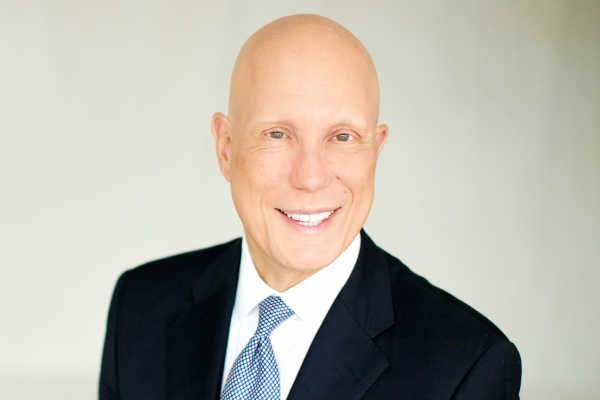NRF CEO navigating turmoil with empathy, solid finances
NRF CEO navigating turmoil with empathy, solid finances
- September 11, 2020 |
-
 CEO Update
CEO Update

Matthew Shay turned National Retail Federation into advocacy giant with strong balance sheet; is ready for whatever future holds
 Shay
Shay
CEO Update: What lessons have you learned from managing virtually during the pandemic?
Association Leadership Awards
Read the profile of 2020 Association Professional Society CEO of the Year honoree Michelle Mason of Association Forum.
Read the profile of 2020 Association Lobbyist of the Year honoree Kevin Keane of the American Beverage Association.
For information about attending the Sept. 24 virtual event, go to www.ceoupdate.com/awards
Matthew Shay: The early lessons were the need for regular communication, the need to stay connected and bring people along and the need to have empathy and understand the real concerns and struggles that people were facing in their own lives. In the first couple of weeks, I made phone calls to (all 125 National Retail Federation) staff individually to just check in and speak to them and let them know that we were thinking of them and supportive and wanting to be helpful and to get their thoughts.
Those are the kinds of things you've got to really think about: what it's like to be in someone else's shoes (and how they may) feel isolated and lonely or overwhelmed with health issues or childcare issues. It really caused all of us to renew our sense of empathy to try to communicate in even more effective ways to try to make people feel connected and part of the group, because otherwise you would have lost people.
CU: How are you meeting the pandemic-related and economic challenges?
MS: It all begins with ensuring that you've got alignment between what the volunteer leaders of the organization are telling you, and the way in which you're aligning your resources internally. Like many businesses, early in the lockdown we had parts of our team who were extraordinarily busy, and we had members of our team who just were not able to contribute because there wasn't a lot of activity in some parts of our business.
Over time, we've been able to ensure that everybody is aligned in pursuing the things that are most directly connected to our members' priorities. (This is an) opportunity to be agile, to be nimble, and to put the resources where you really need them as quickly as you possibly can.
CU: Has this situation changed your vision of the future of the association? Trade shows are such a big part of what NRF does.
MS: We've got an extremely healthy balance sheet, a very strong financial position. So, we have the ability to make decisions about the future based on strategy and policy priorities, not based on finances. For us, this is an opportunity to imagine what the future of the NRF needs to look like in order to support the future of the industry that we represent. We're going to have a virtual event in January and our live annual convention in June. We have the financial resources to ensure that we can continue serving our members from now until that time without … having to interrupt service to wait for the right environment for another trade show.
CU: What role do you think the association should play in matters such as diversity, inclusion and racial equity?
MS: The retail industry has a history of being very, very supportive of diversity and inclusion, of racial and social justice. It's very appropriate for the NRF as a trade group to be playing a role both internally—to ensure that we have the right resources and the right conversations—but also to support our members. And we've got a committee (of member CEOs) that continues to identify opportunities for us to engage at a higher level. We've got a working group that's got scores of companies and individuals participating. We've got tremendous resources devoted through our foundation on career and skills, training, and workforce development issues, and on scholarships, and engaging young people in support of underserved communities.
CU: What has been your greatest gamble? Why was it such a big risk?
MS: (Taking the CEO job at NRF in 2010) was a big gamble. There was a big transformation that needed to take place (to refocus the association on advocacy). NRF a decade ago was not in the same financial position that it is today in terms of balance-sheet strength. But I always thought that it was very clearly an enormous opportunity. The risk was that because of the diversity of the membership, because of the many competing priorities inside the organization, because of the history and the role that the NRF played in the industry, that it would be difficult to get alignment around the vision that advocacy should be the preeminent objective and priority of the association. n
Career highlights
Second CEO stint: Before joining the National Retail Federation as president and CEO in 2010, Shay had been the top executive at the International Franchise Association for five years. Shay worked at IFA in several roles after joining the group in 1993, including executive vice president and chief counsel.
Proudest accomplishment: Putting NRF on firmer financial footing in the aftermath of a deep recession and building around advocacy as a prerequisite for accomplishing all other goals. "That was an educational process that took us a few years, and we didn't have universal successes in the first couple of years, but over time, people bought into it," Shay said.
Extra credit: Shay majored in English and political science at Wittenberg University in Springfield, Ohio, and then graduated with a law degree from The Ohio State University. He earned an MBA from Georgetown University's McDonough School of Business in 2011, after he already had been a chief executive at two associations.
